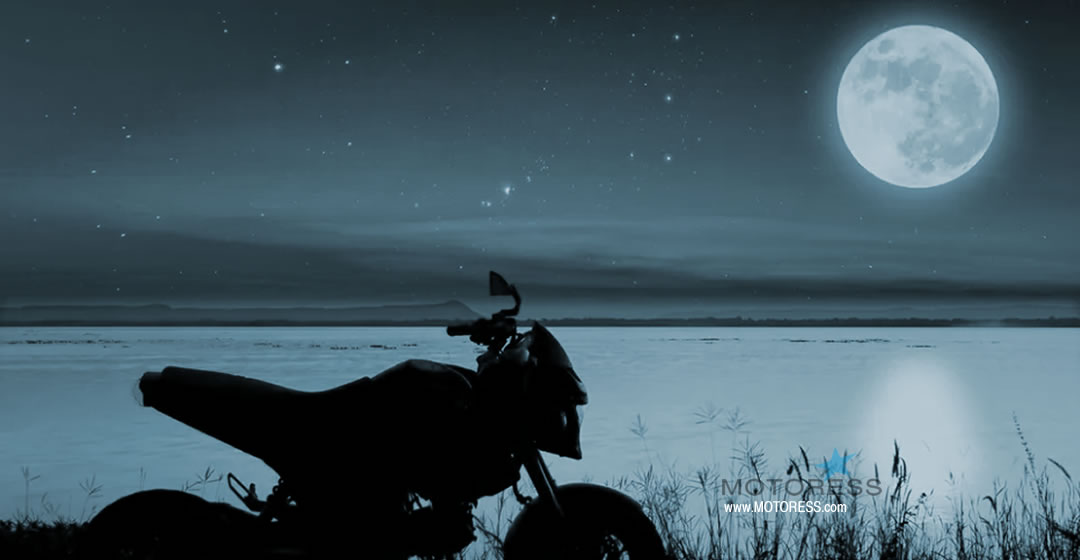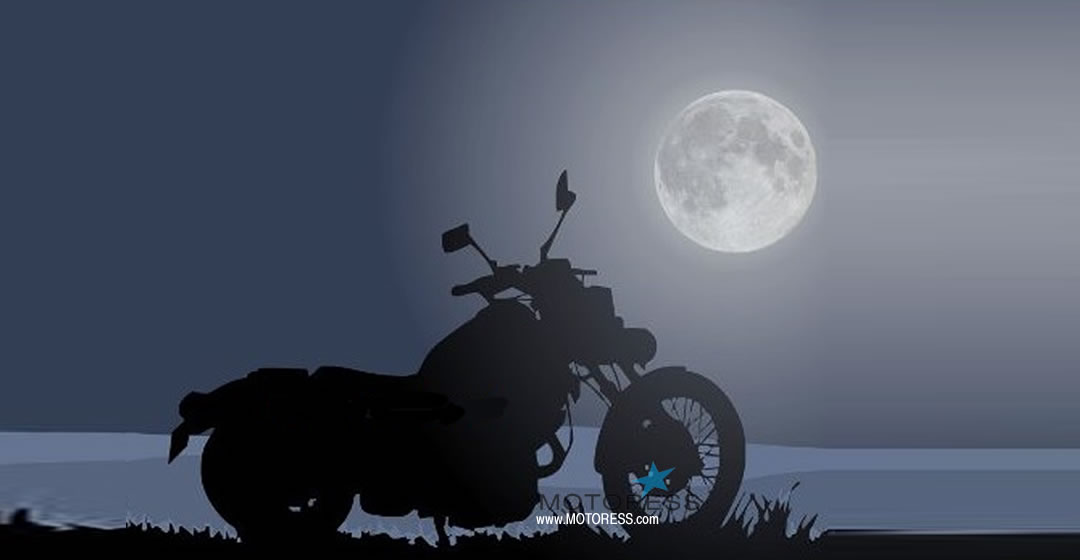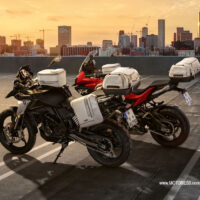Last Update: 31 August 2023

Navigating the open road on a motorcycle offers unparalleled freedom and adventure, but it comes with its share of risks, especially when distracted drivers share the same space. Those mesmerising moonlit nights, when a full moon graces the sky, beckon us to embark on a thrilling journey. Yet, in the midst of this celestial spectacle, even a momentary glance at the radiant orb can lead to a loss of control. Furthermore, the presence of a full moon has been known to influence the behaviours of fellow road users, diverting their attention away from the motorcycle approaching them. Let’s check the research and explore the art of safely enjoying a full moon motorcycle night ride, ensuring that every moment under the lunar glow is both enchanting and secure!
The Facts: Research Proves Risks Exist On Full Moon Night Rides
It is not intended to discourage your enthusiasm for embracing the thrill of a full moon motorcycle ride, but awareness and knowledge are your strongest companions when it comes to enhancing your skills as a rider and managing risks effectively. Here’s a truth worth acknowledging: the allure of a full moon is undeniable. It has captured the imagination of countless authors and musicians and serves as a central theme in legends and myths spanning the globe. Our innate attraction to the full moon, however, can regrettably play a role in tragic motorcycle accidents. Researchers tested this (research published five years ago on Dec. 11 in BMJ /British Medical Journal) where they analysed data from the official United States registry of motor vehicle crashes from 1975 to 2014, during which time 494 full moons and 65 supermoons appeared. The researchers found that on nights illuminated by a full moon, fatal motorcycle accidents increased by 5 percent compared to nights without a full moon. On evenings when the supermoon decorated the sky, this increased to 32 percent. The study included data from the United States, the United Kingdom, Canada, and Australia.
The researchers hypothesised that because people’s attention is naturally drawn to a full moon, it might contribute to fatal motorcycle crashes. In particular, glancing at a full moon takes the motorcyclist’s gaze off the road, which could result in a loss of control.
They found 4,994 fatal crashes occurred on the nights with a full moon, which is equal to 9.10 crashes per night. In contrast, a total of 8.64 fatal crashes per night occurred on nights without a full moon. Fatalities increased further under a supermoon, amounting to a total of 703 fatal crashes, or 10.82 fatal crashes per night. This means that for every two full moon nights, there was one additional fatal crash. Under the supermoon, this increased to two additional deaths.
Overall, there was a total increase of 226 additional fatal crashes on nights with a full moon during the entire study period! So, knowing that, lets’ be prepared!

Full Moon Night Ride Preparation
With the facts above, it’s imperative that we get ready, to ensure a safe motorcycle ride during a full moon night. Here’s a thorough guide along with essential points to ensure your readiness!
- Pre-Ride Inspection: Before setting out, thoroughly inspect your motorcycle to ensure it’s in optimal condition. Check tires, brakes, lights, and fluids.
- Gear Up: Always wear appropriate safety gear, including a DOT-approved helmet, full riding gear with reflective elements, gloves, and sturdy boots.
- Check the Weather: Monitor weather conditions and be prepared for any changes, as full moon nights can sometimes bring unexpected weather patterns.
- Plan Your Route: Choose your route in advance and share it with someone you trust. Stick to well-lit, familiar roads whenever possible.
- Bike Lights: Ensure that all your motorcycle lights are in working order, and consider adding auxiliary lights or reflective tape to enhance your visibility.
- Moon Observation Safety: While the full moon can be captivating, limit your moon gazing to safe stops, like rest areas or designated scenic overlooks. Avoid looking at the moon while riding, as it can distract you and compromise your safety.
- Adjust Your Speed: Reduce your speed on moonlit nights, as visibility may still be limited, and unexpected obstacles can appear.
- Increase Following Distance: Keep a safe following distance from vehicles ahead of you, as this provides more time to react to any sudden changes.
- Stay Alert: Be extra vigilant for wildlife that might be more active during the night.
- Use Your Horn: If you suspect a driver hasn’t noticed you, use your horn to alert them to your presence.
- Defensive Riding: Assume that other drivers may not see you, and ride defensively. Position your bike to maximise your visibility to other road users.
- Avoid Fatigue: Riding at night, especially under the mesmerising glow of the full moon, can be tiring. Take breaks when needed to stay alert and focused.
- Group Riding: If riding in a group, maintain a staggered formation to increase visibility and give each rider more space to react.
- Stay Sober: Never consume alcohol or any substances that impair your judgement before or during your ride.
- Know Your Limits: If you’re new to night riding or feel uncomfortable, consider riding during daylight hours until you gain more experience.
You can maximise the enchantment of a full moon motorcycle night ride while prioritising your safety and that of fellow road users. Remember that preparation and awareness are your greatest allies when riding under the moon’s glow!
MORE STATS FROM THE STUDY
Study Defines Full Moon As Entire Face Illuminated
The researchers defined a full moon as the one night each month when the entire facing surface of the moon was illuminated. They also included the rare occasions in which two full moons appeared in the same month. They studied a 16-hour time frame, which they labelled as nighttime motorcycle activity, which fell between 4 p.m. and 8 a.m. The overall study duration spanned 40 consecutive years.
The paper, “The full moon and motorcycle related mortality: population based double control study,” was supported by the Canada Research Chairs Program, the Canadian Institute for Advanced Research, the Canadian Institutes of Health Research, and the Ontario Ministry of Transportation.
The Research:
- Objective To test whether a full moon contributes to motorcycle related deaths. Design Population based, individual level, double control, cross sectional analysis.
- Setting Nighttime (4 pm to 8 am), United States.
- Participants 13 029 motorcycle fatalities throughout the United States, 1975 to 2014 (40 years).
Outcome Measures Motorcycle Fatalities During Full Moon
Results 13,029 motorcyclists were in fatal crashes during 1482 relevant nights. The typical motorcyclist was a middle-aged man (mean age 32 years) riding a street motorcycle with a large engine in a rural location who experienced a head-on frontal impact and was not wearing a helmet.
4494 fatal crashes occurred on the 494 nights with a full moon (9.10/night) and 8535 on the 988 control nights without a full moon (8.64/night). Comparisons yielded a relative risk of 1.05 associated with the full moon (95% confidence interval 1.02 to 1.09, P=0.005), a conditional odds ratio of 1.26 (95% confidence interval 1.17 to 1.37, P<0.001), and an absolute increase of 226 additional deaths over the study interval.
Conclusion
The full moon is associated with an increased risk of fatal motorcycle crashes, although potential confounders cannot be excluded. An awareness of the risk might encourage motorcyclists to ride with extra care during a full moon and, more generally, to appreciate the power of seemingly minor distractions- at all times.
“While these figures might seem low on the surface, they are quite significant, all of these deaths could have been prevented completely by small difference in behaviour.” – states researcher Redelmeier
The typical motorcyclist was a middle-aged man riding a street bike with a large engine in a rural location, who experienced a head-on front impact. Less than half were wearing a helmet. Seventy-three percent of the crashes occurred during the hours before midnight, and 27 percent occurred during the hours after midnight.
Note: The researchers highlight the limitations of the study. For example, other distractions and traffic hazards were not considered, and neither were factors including the prevailing weather or moon visibility. And while they used large datasets, like any routinely collected data, errors could have been made when the data was entered.
Nevertheless, the study’s findings highlight the importance of safe, careful, and attentive riding, under all conditions.
“The best approach to safe riding and driving is reducing as many distractions as possible and keeping alert!” The average ride on a motorcycle is more dangerous than a drunk driver with no seatbelt travelling the same distance. Because of this, its always recommended riders and drivers orient their attention, ignore distractions, and continuously monitor their dynamic surroundings.
What This Study Adds
- A modest absolute increased risk of a fatal motorcycle crash was associated with the full moon in the United States.
- The increased risk of death associated with the full moon further replicated in analyses from the United Kingdom, Canada, and Australia.
- The increased risk of death was not necessarily caused by distraction since a full moon might also lead to more riding, faster speeds, added traffic, or other changes.




